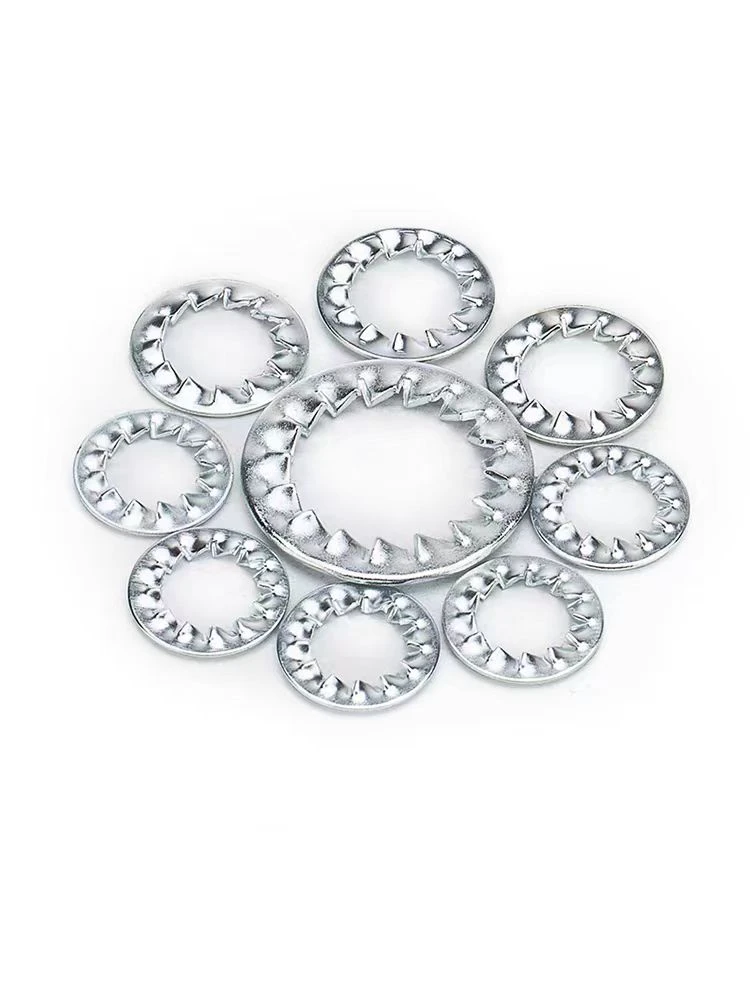

m3 lock washer
Ott . 15, 2024 07:55 Back to list
m3 lock washer
Understanding M3 Lock Washers
Lock washers play a crucial role in various mechanical assemblies, ensuring that fasteners remain tight and secure under vibration and torque. Among the multitude of lock washer types, the M3 lock washer stands out for its specific application in securing M3 screws and bolts. This article will delve into the importance, types, and applications of M3 lock washers.
At its core, a lock washer is designed to prevent the loosening of bolts and screws under dynamic conditions. When used in conjunction with an M3 fastener, the lock washer provides a reliable solution to the problems associated with vibration-induced loosening. This is particularly vital in applications where safety and reliability are paramount, such as in automotive, aerospace, and industrial machinery.
Understanding M3 Lock Washers
1. Split Lock Washers These are perhaps the most recognizable type. They are shaped like a ring with a cut or split in one part. When an M3 screw or bolt is tightened, the split washer compresses and creates a resilient locking force that helps to maintain tension. The split design allows the washer to exert pressure against the fastener, which is effective in preventing movement.
m3 lock washer

2. Tooth Lock Washers These washers have protruding teeth that bite into the surface of the fastener and the material being fastened. This feature provides an even greater grip, making them ideal for high-vibration environments. The sharp teeth cut into the surface to create a secure attachment that resists loosening.
3. Spring Lock Washers These washers are designed with a spring-like shape that allows them to absorb shock and vibrations. The constant pressure they provide ensures that the fastener remains tight over time. Spring lock washers are particularly useful in applications with fluctuating loads.
The application of M3 lock washers extends across various industries. In automotive engineering, they are used in critical components such as engine parts and transmission assemblies, where any loosening of fasteners could lead to catastrophic failures. In electronics, M3 lock washers help stabilize connections in devices that experience thermal expansion and contraction. Similarly, in construction, they are used in securing structural components to ensure the safety and integrity of buildings and infrastructure.
Choosing the right type of M3 lock washer requires an understanding of the specific conditions in which it will be used. Factors such as the level of vibration, the materials being joined, and environmental conditions (like exposure to moisture or corrosion) should guide the selection process.
In conclusion, M3 lock washers are essential components that provide a dependable solution to the challenge of fastener loosening. With various designs tailored for different applications, they are indispensable in enhancing the durability and safety of mechanical assemblies. Whether in the automotive industry, electronics, or construction, the effective use of M3 lock washers can make a significant difference in performance and reliability. Proper selection and application of these washers will ensure that critical components remain securely fastened, thereby prolonging the lifespan of machinery and enhancing safety standards across various fields.
Latest news
-
Hot Dip Galvanized Bolts-About LongZe|High Strength, Corrosion Resistance
NewsJul.30,2025
-
High-Strength Hot Dip Galvanized Bolts - Hebei Longze | Corrosion Resistance, Customization
NewsJul.30,2025
-
Hot Dip Galvanized Bolts-Hebei Longze|Corrosion Resistance&High Strength
NewsJul.30,2025
-
High-Strength Hot-Dip Galvanized Bolts-Hebei Longze|Corrosion Resistance&High Strength
NewsJul.30,2025
-
Hot Dip Galvanized Bolts-Hebei Longze|Corrosion Resistance&High Strength
NewsJul.30,2025
-
Hot Dip Galvanized Bolts - Hebei Longze | Corrosion Resistance, High Strength
NewsJul.30,2025

